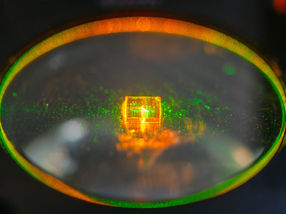Curious caffeine crystal prepared
A team of chemists based in four labs across the world have successfully prepared a crystal structure that has eluded scientists for more than 60 years.
After many years of work, the team developed a successful method to prepare the caffeine: benzoic acid co-crystal, which was previously thought to be unobtainable. Despite a computational study suggesting that a stable cocrystal comprising the two components should form, all attempts using well-established techniques failed.
The scientists hypothesised that a kinetic barrier was hindering the cocrystal formation, so they tried using a benzoic acid derivative and found that this facilitated crystallisation. Curiously, once the seeds had been introduced into the lab, they found that the cocrystal formed regardless of whether or not they were used in crystallisation experiments, meaning that they had to move further experiments into uncontaminated laboratories.
Cocrystallisation is significant in the pharmaceutical industry because it can help to improve solubility, stability and bioavailability.
Most read news
Other news from the department science

Get the chemical industry in your inbox
By submitting this form you agree that LUMITOS AG will send you the newsletter(s) selected above by email. Your data will not be passed on to third parties. Your data will be stored and processed in accordance with our data protection regulations. LUMITOS may contact you by email for the purpose of advertising or market and opinion surveys. You can revoke your consent at any time without giving reasons to LUMITOS AG, Ernst-Augustin-Str. 2, 12489 Berlin, Germany or by e-mail at revoke@lumitos.com with effect for the future. In addition, each email contains a link to unsubscribe from the corresponding newsletter.


























































